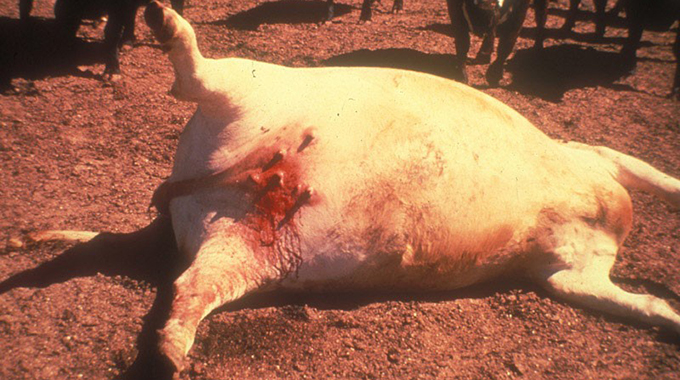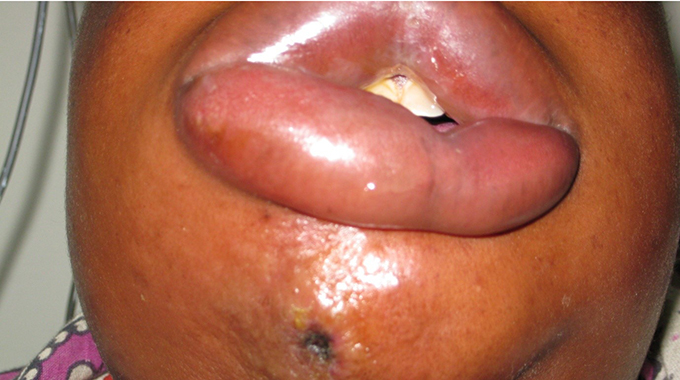Source: Anthrax ravages parts of the country | The Herald 17 JAN, 2020

Elita chikwati Senior Reporter
At least 177 cattle have died from Anthrax while 87 people were treated for the disease in various clinics and hospitals after eating meat from cattle that died from the infection during this season. Anthrax is a bacterial disease that affects a wide range of animals and human beings.
Livestock, particularly cattle, take up anthrax bacteria during grazing while people get infected when they handle or eat anthrax-infected meat.

Symptoms of anthrax in human beings
Anthrax disease occurs throughout the year but in Zimbabwe, most cases start from onset of rainy season.
It is rare to see an animal showing signs of the disease, animals are often found dead.
Division of Veterinary Field Services, Acting Director, Dr Wilmot Chikurunhe has told The Herald that anthrax outbreaks have been recorded in Gokwe, Nkayi, Gutu, Bikita, Marondera, Mazowe, Chegutu, Makonde and Sanyati.
He said the disease is being detected in traditional outbreak areas and not affecting the whole district as it may seem from information circulating.

A person infected with anthrax
“Even in the affected dip tanks, the disease is restricted to certain areas although the vaccination coverage is then extended to a wider area to contain the outbreak.
“Cattle owners in anthrax areas need to ensure that their cattle are vaccinated against the disease once a year before the rainy season starts. The Department of Veterinary Services comes in to prevent massive outbreaks but the primary responsibility for disease prevention lies with the owner,” he said.
Dr Chikurunhe said Anthrax carcasses must be disposed of safely in a manner that does not leave the bacteria exposed to air.
“The best method is to burn the carcasses in a pit then bury the ashes. However, some parts of the country have firewood problems. In these areas it is recommended to dig a pit six feet deep, bury the carcass, cover the carcass completely with soil and apply a layer of agricultural lime before filling the rest of the pit with soil. This is best done under supervision of veterinary personnel,” said Dr Chikurunhe.
COMMENTS